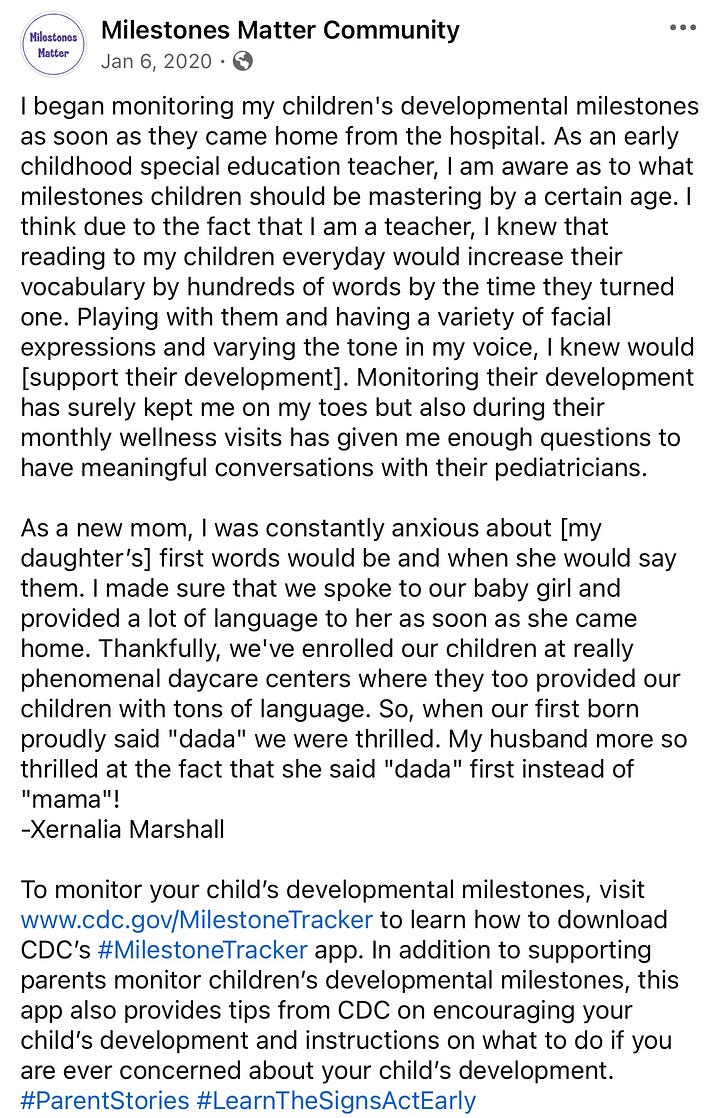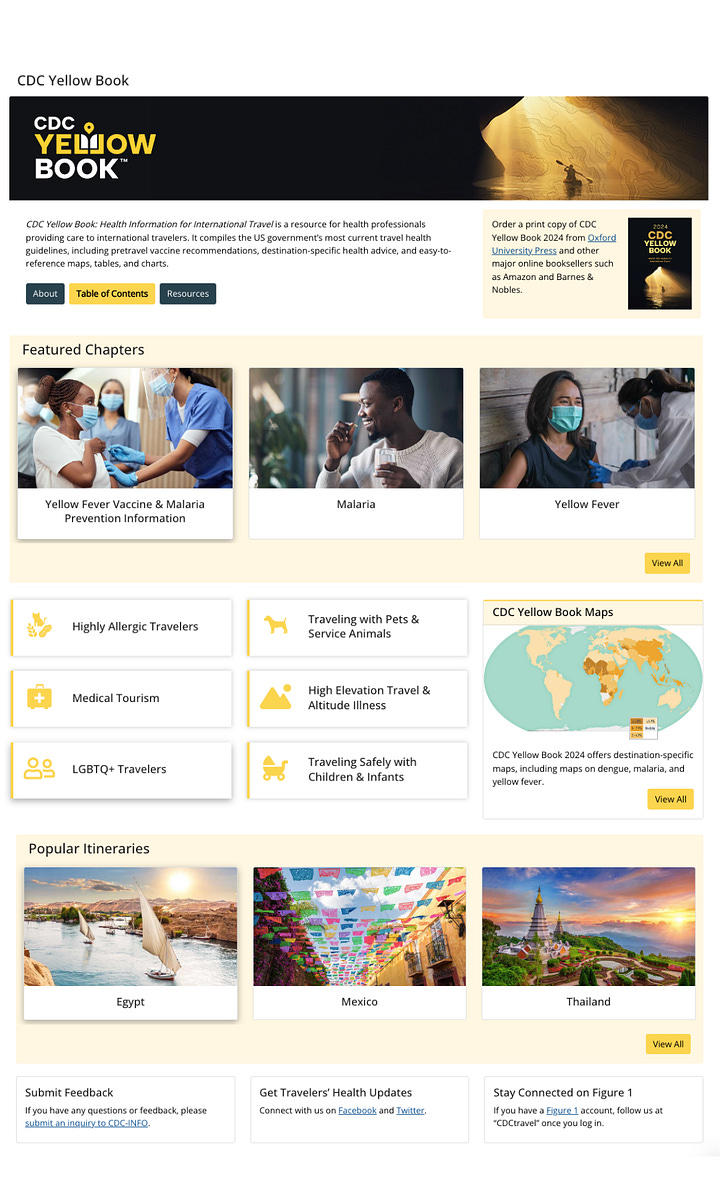20 Lessons from a Social Impact Communicator (With Real Examples)
What I've learned about driving change through stories, strategy, and empathy. Check out the lessons and examples below.
When I was growing up, the career options presented to me were few and familiar: doctor, engineer, or lawyer. They were straightforward, respectable, and stable..and yes, they were (and are) impactful careers. Yet, none of them spoke to my creative side. The side of me that lit up when I wrote a story, designed a website, or picked up a video camera.
“If I didn’t choose one of these predetermined paths, would my career feel meaningful?” I wondered. “Is Hollywood the only place to have a creative, but impactful career?”
Thankfully, my journey through college led me to public health, and in grad school, I discovered health communication. I had never realized that storytelling, communication, or design could also be tools for real-world impact. But once I did, I was hooked. I dove deep into the field by taking on internships, reading journal articles, cold e-mailing professionals I admired, and eventually a career at the Centers for Disease Control and Prevention (CDC). There, I saw how storytelling and strategy converge across disciplines: in design, UX, marketing, education, and tech.
As I have now left the CDC amid broader shifts in the federal government, I’ve taken time to reflect on what I’ve learned. These are 20 lessons (with real examples) from the field of social impact communication. Some originate from research, many from experience, and all rooted in the desire to make the world a healthier place.
Part 1: Mindsets & Principles for Social Impact Communicators
1. You need purpose to stay in the work, not just to start it.
The work is hard to sustain. As social impact communicators, we don’t always have the same clear outcomes as corporate marketers (e.g., driving up sales), and often our impact takes time. But purpose is what carries us through the ambiguity. It keeps us going when the metrics don’t look neat. That’s why I am still passionate about this field, as it’s driven by meaning.
Example: When the internet was buzzing about crew socks vs. ankle socks (a generational debate), I found this to be the perfect opportunity to toss in life-improving information about sun exposure, heat-related illnesses, and infectious diseases. Creating posts like this remind me of the passion I have for using creativity and communication to make a social impact.
2. Your title doesn’t define your ability.
You don’t need to lead a major program or have a prestigious title to make a difference. During my career, including roles at the CDC, I’ve held multiple titles. Yet, what mattered was my willingness to take initiative, solve problems, and advocate for communities. People trusted me to lead not because of hierarchy, but because I cared and showed up.
3. Cultural relevance beats institutional authority.
It may not be how we want the system to work, but messages from influencers, creators, and viral trends often get more visibility than from credible, authoritative institutions in today’s world. As social impact communicators, we have to face that reality. People trust what feels relatable and current.
So, we must ask ourselves: how do we “play the game” without compromising our ethics or accuracy? The answer is creative, culturally-attuned communication. We must find ways to make accurate, accessible, and life-improving information feel just as engaging and relevant as the content people are already consuming. This means thinking like a strategist and like a creator.
Example: As part of my work to protect travelers from summer-related illnesses, I crafted an Instagram carousel that played off the song of the summer, Espresso by Sabrina Carpenter. Find the original post here.
4. You are not your audience.
You may know your audience inside and out, but you are not creating content for you. Talking to people (e.g., user research) is essential. Listen. Don’t assume. When I design communications for social impact, my job isn’t to speak for people. It’s to speak to people. It’s to design messages or products that align with their needs and address their pain points.
5. You may not be the best messenger.
During my time in the federal government, I often saw consumer polls about public trust. Even though our data was solid, public trust in government messaging fluctuated. People trust voices that sound like them, look like them, and live like them. As communicators, we have to be creative in how we disseminate information (e.g., partnering with local leaders, adapting our tone, meeting people where they are).
Part 2: Strategy & Effective Communication
6. Leave the jargon at the door.
If people can’t understand your message, it can’t make an impact. And in a world with multiple cultures, languages, and levels of education, plain language isn’t a nice-to-have, it’s a necessity.
What may feel like “basic” terminology to you might be completely foreign to someone else. That’s why simplifying doesn’t mean dumbing down, it means respecting your audience enough to meet them where they are.
7. Behavior change theories are an asset.
I studied social and behavioral sciences in college and graduate school, and those frameworks (e.g., Social Cognitive Theory, Stages of Change Theory) have been essential in designing messages. Even outside public health, these theories help explain why people act and how we can support them through communication.
Example: When I reviewed the guidance on protecting oneself during a stampede, I considered Social Cognitive Theory, a behavior change theory that focuses on learning from others’ actions. For this particular health topic, I visualized a character demonstrating the protective behaviors in a step-by-step manner. This lead me to use a comic strip approach. Find the comic strip here.
8. Impact shouldn’t end at awareness.
Awareness is a start, not a finish line. Just because someone sees a post doesn’t mean they have taken action or changed their health behavior. Great communication can lead to real outcomes: health screenings, getting vaccinated, donating to charitable causes, changing policy. Think beyond “views” and ask yourself: what action do you want someone to take?
9. Go niche.
Trying to reach everyone waters down your message. A metaphor I love: hot water lovers and cold water lovers. If you try to please both, you end up serving lukewarm water that satisfies no one. Focus on one audience. Speak directly to them. Ironically, that specificity often draws in others too.
Example: My goal was to communicate life-saving information about altitude illness, particularly for hikers. I referenced popular music relevant to this niche audience as a creative way to capture attention. Find the original post here.
10. Timely (yet still accurate) communication is better than comprehensive but late communication.
In government, speed often collides with bureaucracy. But during crisis situations like an infectious disease outbreak, waiting for every fact before speaking can do more harm than good. It’s better to say what you do know and clarify what you don’t. Why? Because the silence gets filled with misinformation.
11. The message isn’t done until it’s tested.
We test many versions of a product before launching it, and it ensures that the best product goes to market. This mentality should be applied to messages too. During the pandemic, I co-authored a paper testing vaccine messages for travelers. The results were clear: some worked, some didn’t. Testing ensured that our messages were just build on theories and data, but that they resonated with real people in practice.
12. Stories go beyond data.
When I was working on the “Learn the Signs. Act Early.” campaign, a campaign focused on monitoring children’s developmental milestones, we shared data about the rates of developmental disability in the U.S. But what put those numbers into perspective? Real stories from parents who noticed early signs of developmental delay and got help. That human connection cuts through fear and confusion in ways data simply can’t.


Example: As part of the “Learn the Signs. Act Early.” campaign, I connected with parents willing to share their stories about their children’s developmental milestones. These stories were hosted on an ambassador-run Facebook community in 2018-2019.
Part 3: Tactics: Tools, Channels, and Creativity
13. Mobile apps are a powerful communication tool.
I worked on teams that used mobile apps to improve public health, such as CDC’s Milestone Tracker mobile app. At first, this type of tech felt intimidating as I didn’t have a coding background. But I realized the design of mobile apps are just another way to deliver a message. Whether the message is written through code, in a blog post, or captured on video, the goal is the same: guide someone toward a healthier life.
14. Design is an essential part of communication.
Good design isn’t just about aesthetics; it’s about accessibility and impact. I’ve seen websites that are unsuccessful at achieving their goals because the user experience made the information impossible to find. Messaging and design must be aligned, or the message can’t have impact.


Example: The first image displays the CDC Yellow Book 2020 website. The second image displays the CDC Yellow Book 2024 website, after I led a UX overhaul that addressed audience needs, design best practices, and navigation issues.
15. Print is not dead.
When I was the Managing Editor of the CDC Yellow Book, a comprehensive travel medicine publication, we debated whether to go fully digital. But our audience included travel medicine specialists in remote areas and they needed a printed publication they could rely on without Wi-Fi. Digital-first is great, but always consider your audience’s context.
16. Think about current and global events.
People are already paying attention to what’s happening in the world, so let’s meet them there. Leverage current events, global moments, and cultural trends to make health and social impact messages relevant, timely, and sticky.
Example: During the recent Olympics in Paris, there was a heatwave—a concern for summer attendees. I thought about Olympic runners leaping over hurdles, and used that imagery to help people think about “dodging” heat-related illnesses. That metaphor helped refresh a message that otherwise felt stale. Don’t be afraid to get creative and leverage current events. Find the original post here.
17. Creativity and data are not opposites.
Data tells us what is happening. Creativity helps people care. The best campaigns bring them together. Use data to guide your creative decisions, but let storytelling, emotion, and humanity do the heavy lifting.
Part 4: Measuring Impact
18. Sometimes it’s the small messages that have the biggest impact.
Don’t be fooled by vanity metrics. A message that reaches 100 people and inspires 5 to get cancer screenings can be more impactful than one that reaches 100,000 with no action. One policymaker who sees your Instagram story at the right time could shift policy. One donor who is moved by your video may fund your non-profit. Reach is important, but impact can be measured in multiple ways.
19. Impact is a long game.
Social and behavior change doesn’t happen over night. Social impact communication is about repeated exposure, building trust, and long-term momentum. Your first message might be ignored. Your eighth might change a life. Be patient. Stay consistent.
20. The work of a communicator will always matter.
AI can now write copy, generate images, and create videos. But it can’t feel. It didn’t lose a parent to cancer. It didn’t battle mental illness. As communicators, our humanity is our superpower. Communication is not just the product; it’s the journey, the emotion, and the imperfection that gets woven into the message. And that’s what makes it matter.
Final Thought
I didn’t end up in Hollywood, but I did end up telling stories that move people. Communication is more than just messaging; it’s strategy, empathy, design, data, and above all, humanity.
What lessons do you have to share? Share them by leaving a comment below.




